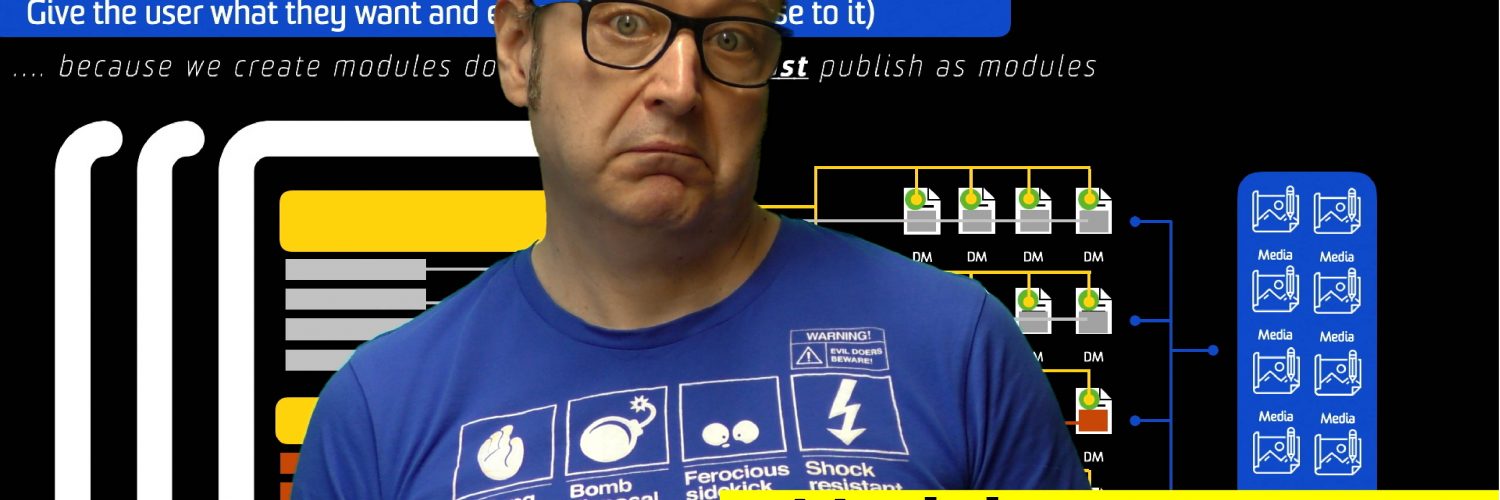Sensible modular breakdown question is an excellent topic of debate when we deconstruct our technical content, especially around S1000D, DITA, or other methods.
This question came in from a subscriber looking to adopt S1000D for the first time. Embarking on S1000D adoption can be intimidating at the best of times, then add into the mix practical issues like appropriate modularisation and which tools enable us to publish usable content.
Over the years, I have seen projects over-modularise and projects under-modularise with everything in between. There are many instances where modularisation has been over and under thought. Projects are often so focused on the modular requirements of S1000D/DITA that they lose sight of the fact the content still needs to be usable.
Because we create modular data does not mean we deploy modular data!
When embarking on a modularisation task for our technical publications, we must ask ourselves a series of sensible questions. The frequency of information access and the complexity of the content is a good starting block. Asking a user to depart from their starting module to perform the simplest of tasks will frustrate the user. The nature of modular content creation does not mean we publish and deliver in a modular format. To do so could end up taking the user numerous clicks away from their starting point. The danger of this is we end up confusing or frustrating the user, and the publication is considered unusable. The technical content we produce and deliver should enable the user, not disable.
Whenever I advise a project, I will always start with a sensible breakdown of the content beyond ticking ‘modular concept’ boxes. Projects often fall into the trap of buffering out the Data Management Requirements List content for various reasons. I have seen projects over modularise as they are paid-per-module or just have not considered the end output.
Some software tools bring the modular content together in a usable and helpful way to an end-user. A good example is the concatenation of auto-generated content to create chapter-based outputs, and some tools will import and place inline external referenced content dynamically inline, making it readable.
When breaking down our content into modules, we mustn’t overthink it. Have an eye on where the content is going and how we support it as a helpful deployment via software tools.
Watch the whole YouTube video where I give examples of over and underthinking modular content.
Want more from Tech Data World? Why not join us as a full subscriber and get more content just like this?






